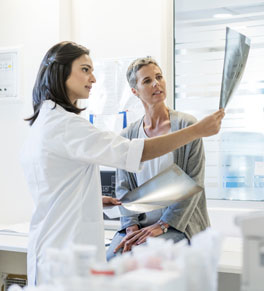Technical advances in heart care

Heart disease remains the leading cause of death in the United States, claiming nearly 650,000 Americans a year, according to the U.S. Centers for Disease Control and Prevention (CDC).
But new procedures and innovative devices are giving heart specialists tools to help people with life-threatening heart conditions.
The UCI Health cardiovascular specialists are refining their state-of-the-art structural heart program to adopt these procedures, offering hope and improved quality of life to patients with conditions that include cardiac arrhythmias, leaking or narrowing valves, and severe heart failure.
Life-giving alternatives
“We’re never going to have enough hearts for transplants and medicines are never going to cure heart failure,” says UCI Health interventional cardiologist Dr. Pranav Patel.
“But these advances have really enhanced our ability to help patients with severe heart disease,” added Patel, a professor and chief of cardiology at the UCI School of Medicine.
Some are permanent fixes that can help patients without requiring open-heart surgery, given that many are too ill for such major surgery.
Others offer bridge treatment for very ill patients who are waiting for a heart to become available for transplant.
Heart valve help
Patel has used transcatheter aortic valve replacement, or TAVR, to replace the heart’s main valve when it fails to open properly, a condition known as aortic valve stenosis.
The minimally invasive TAVR procedure allows an interventional cardiologist to insert a replacement valve carried in a balloon through an artery in the leg. Once it reaches the stenotic valve, the balloon expands and the replacement valve is deployed. This can be a permanent fix for many patients, Patel says.
Other patients suffer from a heart valve that doesn’t close properly, allow blood to leak back into the heart’s upper chamber. Called mitral valve regurgitation, it is the most common disease of the heart valves.
Patel and fellow cardiologist Dr. Ailin Barseghian El-Farra are now able to insert a device call MitraClip to tighten the leaking valve.
Like TAVR, MitraClip is introduced through a vein in the leg in a minimally invasive procedure that offers a permanent fix for mitral valve insufficiency without the need for open-heart surgery.
Combatting blood clots
Patients who suffer from an irregular heart beat known as atrial fibrillation are at high risk for developing blood clots that can cause a stroke or heart attack. UCI Health cardiac arrhythmia specialist Dr. David Donaldson says a device called the Watchman can help.
The device, which opens to about the size of a quarter, is threaded through a tube in the leg and placed inside the heart’s left atrial appendage (LAA), a small pouch at the top of the heart where blood pools and clots often form.
Watchman forms a barrier between the pouch and the heart chamber to prevent clots from moving into the bloodstream and causing a stroke or other adverse conditions.
Donaldson, an associate professor of cardiology at UCI School of Medicine, says patients are often back to work in a matter of days. After about six weeks, heart tissue grows over the implanted device, creating a seal that is permanent for most patients.
As an added bonus, patients no longer have to be on blood thinning medication to prevent clots, he says.
Replacing heart-lung machines
For patients suffering from severe heart or lung failure, UCI Health cardiovascular specialists now can use a device called ECMO, short for extracorporeal membrane oxygenation, to help keep oxygenated blood flowing through the body, say UCI Health cardiovascular surgeon Dr. Fabio Sagebin.
ECMO is basically a portable heart-lung machine that pumps from the body into a cube where it passes through multiple membranes that take over the lung’s job of removing accumulated carbon dioxide and adding oxygen, then pumping the revitalized blood back into the body.
Similar to a heart-lung machine used during open-heart surgery, ECMO offers an important safety net, allowing the patient’s heart and lungs to rest and giving doctors time in critical situations to solve the heart problem or keep even patients alive while they wait for transplants.
“These procedures are major advances in cardiovascular technology,” says Sagebin, an assistant professor of cardiothoracic surgery in the UCI School of Medicine. “People in the community should feel comforted that UCI can deliver this high-level cardiac care.”




